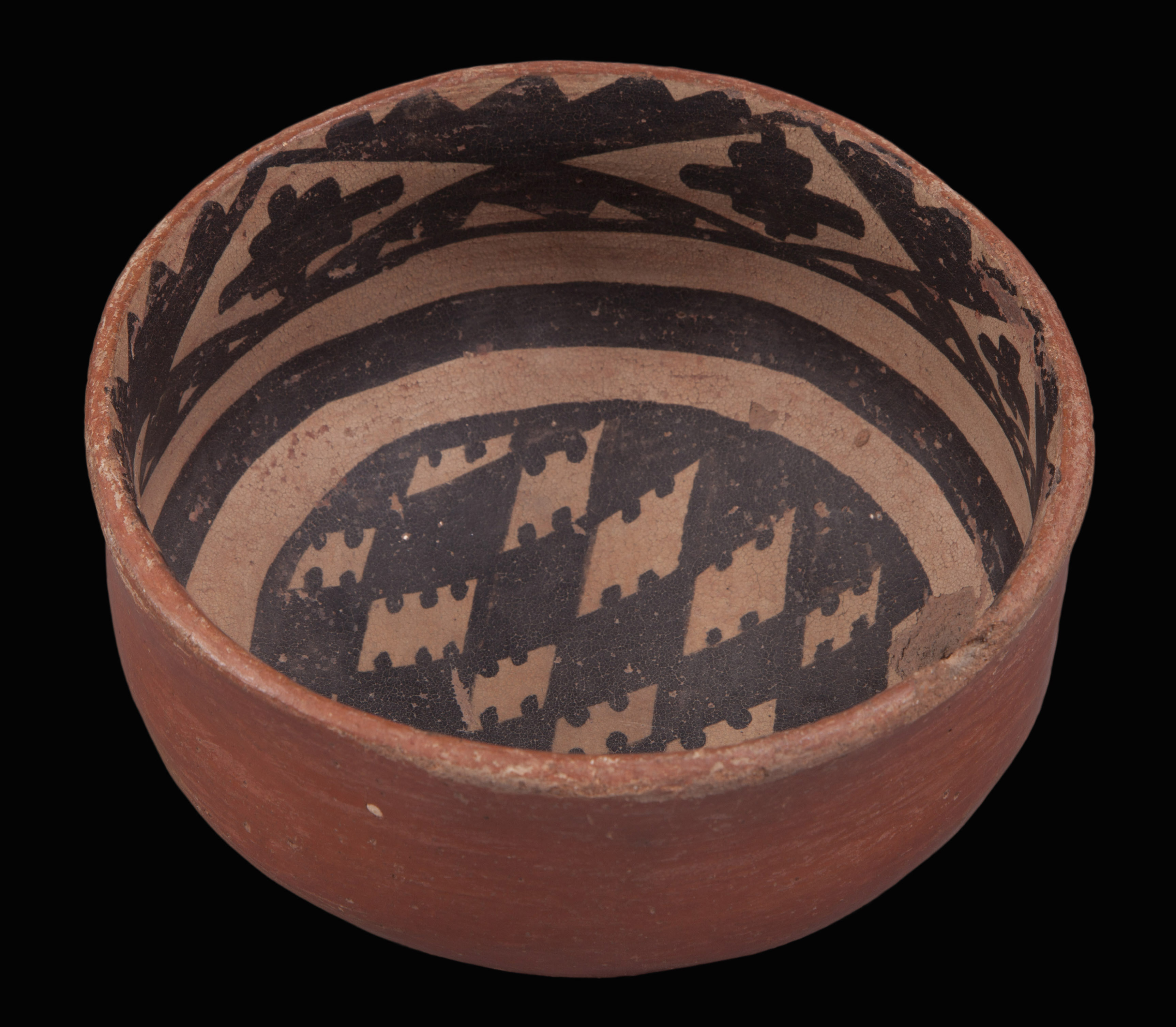Cliff Polychrome is a type of Roosevelt Red Ware very similar to Gila Polychrome, but differentiated by the presence of two interior design fields separated by a banding line. Cliff Polychrome has a distribution from stretching from Homol’ovi II, near Winslow Arizona to Casas Grandes, Chihuahua, Mexico, and from the Phoenix Basin, Arizona to Alamogordo, New Mexico, including the Upper Gila Valley.
Archaeological Culture: Salado
Date Range: A.D. 1350-1450.
Construction: By coiling.
Firing: In an oxidizing atmosphere.
Core Color: Gray to black, tan to brick-red.
Temper: Moderately abundant fine water-worn sand.
Surface Finish: slipped and polished, occasionally painted (exterior); polished, slipped, and painted (interior).
Surface Color: Uniformly red exteriors, occasionally with areas of white slip and black paint; white interiors painted with black designs.
Forms: Recurved bowls (predominate), semi-incurved and semi-flaring hemispherical bowls.
Decoration:
- Paint: Black on white and/or red slip.
- Pigments: Carbon, hematite, and kaolin; organic paint is more common for black, although occasionally mineral paint was used.
- Design: The interior surface of all bowls are white; geometric decorations, bold and free; decorative styles unnamed; solid or hachured stripes, steps, Keys, squares, triangles, scrolls with scalloped or serrated edges.
Variants: Cliff Black-on-red: same as Cliff Polychrome, but without the white design fields.
Comparisons: Distinguished from Gila Polychrome by the presence of dual interior design fields (one at the rim and one on the bottom and walls) separated by a thick banding line. Ninemile Polychrome is also similar, but is slipped red on the interior below the banded field of decoration, and usually has Gila or Tonto exterior decoration. Pinto Polychrome lacks the banding line and upper field design.
Compiled from the following sources:
Lyons, Patrick D. (2013) Placing the Tonto Cliff Dwellings in the Larger Context of the Tonto Basin and the Southern US Southwest. Final report of WNPA Research Project 06-09: Investigating Ancient Dynamics by Studying Salado Ceramics and Obsidian. On file at Tonto National Monument.
Lyons, Patrick D. (2004) Cliff Polychrome (link opens in new window).
Lyons, Patrick D., and Jeffery J. Clark. (2012) A Community of Practice in Diaspora: The Rise and Demise of Roosevelt Red Ware. In Potters and Communities of Practice: Glaze Paint and Polychrome Pottery in the American Southwest, A.D. 1250-1700, edited by L.S. Cordell and J.A. Habitcht-Mauche, pp. 19-33. Anthropological Papers No 75. University of Arizona, Tucson.
Neuzil, Anna, and Patrick Lyons. (2005) An Analysis of Whole Vessels from the Mills Collection Curated at Eastern Arizona College, Thatcher, Arizona. Center for Desert Archaeology Technical Report 2005-001. Tucson.
Compiled by:
Meghann M. Vance, Northern Arizona University Anthropology Laboratories.

